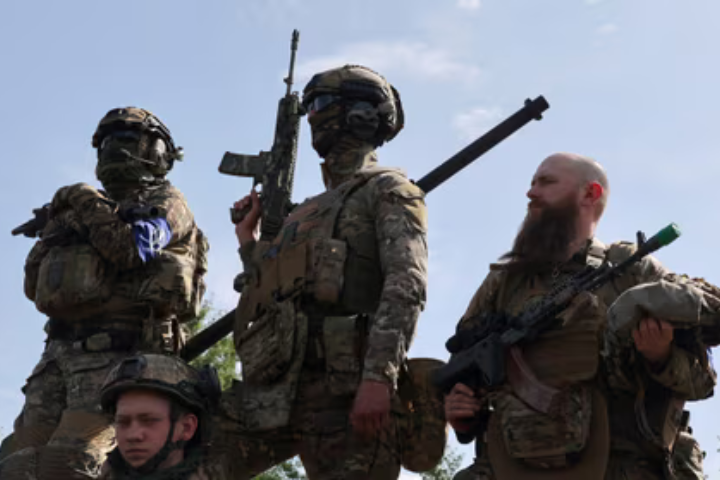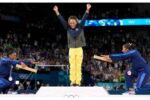On Tuesday, Moscow reported a significant cross-border attack by Ukrainian forces into the relatively quiet Kursk region. This attack marks a notable escalation in the ongoing conflict, with reports indicating that Ukrainian troops advanced as far as 10 kilometers (6 miles) into Russian territory.
Initial Attack Details
The Russian Ministry of Defense stated that approximately 300 soldiers from Ukraine’s 22nd mechanized brigade launched the attack at 8 a.m., supported by a considerable force comprising 11 tanks and more than 20 armored fighting vehicles. The fighting reportedly occurred throughout the day between the border villages of Nikolayevo-Daryino and Oleshnya, extending to the fringes of Sudzha, a town located 10 kilometers inside Russia.
Russian military sources claimed that the Ukrainian forces had been repelled, yet evidence from military bloggers and social media suggested otherwise. Photographs showed strikes on Russian trailers loaded with tanks, indicating a substantial and coordinated effort by Ukrainian forces.
Contrasting Reports
There are conflicting reports about the success and sustainability of the Ukrainian incursion. While the Russian Ministry of Defense initially claimed that the Ukrainian attack was repelled, with the attackers suffering losses and retreating back to Ukrainian territory, some Russian military bloggers offered a different perspective. Rybar, a popular Russian military blogger, reported that the situation in the Kursk region remained tense, with ongoing battles in the border districts. “Judging by the latest footage, Ukrainian formations have managed to advance,” Rybar noted, suggesting that the Ukrainian forces had not been entirely repelled and might have maintained a foothold in the region.
This contrasts with the official statement from Moscow’s defense ministry, which claimed that Russian army units had blocked the remaining Ukrainian fighters trying to gain a foothold near the border. The discrepancy between official reports and independent accounts underscores the uncertainty and fluidity of the situation on the ground.
Ukraine’s Response
As of the time of the report, Ukraine’s political leaders and the Ministry of Defence had not issued a detailed statement about the attack. However, Andrii Kovalenko, the head of an anti-disinformation department at Ukraine’s National Security and Defense Council, acknowledged the attack and disputed Russian claims of control.
“Russian soldiers are lying about the controllability of the situation in the Kursk region. Russia does not control the border,” Kovalenko stated, indicating that the situation was far from resolved and that Ukrainian forces might still be active in the area.
Strategic Implications
The strategic implications of this attack are significant. By launching an incursion into a relatively inactive part of the front, Ukraine might be attempting to stretch Russian defenses, forcing them to divert forces to the Kursk region and potentially weakening their positions elsewhere. This could also be a morale-boosting effort for Ukraine, demonstrating their capability to strike deep into Russian territory.
However, the strategic value of such attacks is debated. Critics within Ukraine argue that these assaults, while bold, do not serve a long-term military purpose. Similar incursions into the Belgorod and Kursk regions in March by anti-Kremlin Russian groups, although noteworthy, were ultimately repelled without achieving significant strategic gains.
Casualties and Damage
Casualty reports from the attack are still emerging and remain unverified. According to Alexei Smirnov, acting governor of the Kursk region, Russian soldiers and FSB forces managed to repel the Ukrainian attack, resulting in the deaths of three Russian civilians and injuries to 18 others. Moscow also claimed to have launched airstrikes on Ukrainian armored units and moved reserve forces to reinforce the frontline, destroying 16 armored units, including six tanks.
These initial reports are often subject to exaggeration, and accurate casualty figures from both sides might take time to emerge. The fog of war complicates the verification of such claims, and independent assessments are necessary to establish the true scale of losses and damage.
Broader Context
This attack occurs against a backdrop of increasing tension and military activity in the region. Since the beginning of the conflict, both sides have engaged in various offensives and counter-offensives, with the frontlines frequently shifting. The attack on the Kursk region indicates that Ukraine is willing to take bold actions to disrupt Russian defenses and potentially change the dynamics of the conflict.
Moscow’s response to this incursion will be closely watched. If Ukrainian forces have indeed established a foothold inside Russian territory, it could prompt a significant escalation in military operations. Conversely, if the attack is repelled as Moscow claims, it might serve as a propaganda victory for Russia, showcasing their ability to defend their borders against Ukrainian aggression.
The cross-border attack by Ukrainian forces into the Kursk region represents a significant development in the ongoing conflict between Ukraine and Russia. With reports of substantial Ukrainian advances and contrasting narratives from both sides, the situation remains fluid and uncertain. The strategic implications of this attack, whether it diverts Russian forces or serves as a morale boost for Ukraine, will unfold in the coming days and weeks. As the fog of war persists, independent verification of casualty reports and battlefield outcomes will be crucial to understanding the true impact of this bold incursion.





GIPHY App Key not set. Please check settings